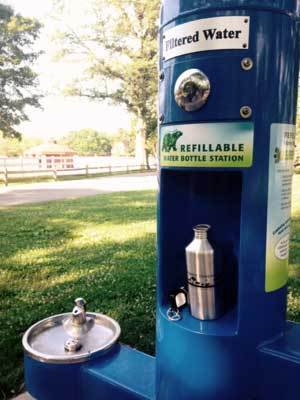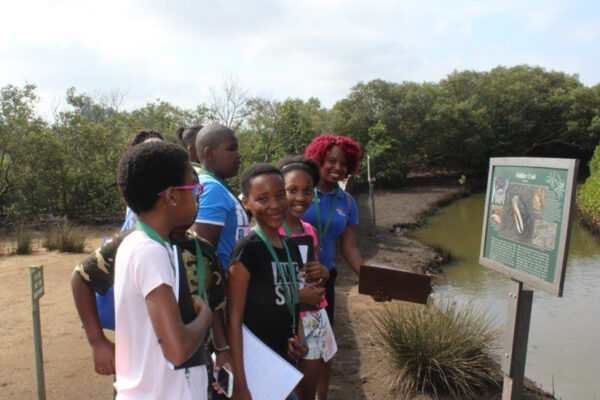There is growing public awareness about the troubling accumulation of plastics in the environment, particularly in the oceans. Luckily, we are in a unique position to turn the tides on plastic use and disposal. Association of Zoos and Aquariums accredited institutions are trusted conservation organizations with millions of visitors annually. We can lead by example through the way we operate our businesses, and as The Ocean Project has reported, our institutional actions can help inspire our visitors, staff, and volunteers to make greener choices too. Reducing disposable plastics is critical for the health of our ecosystems and ourselves. And we know that our institutions want to take action, but where to begin?
The AZA Green Scientific Advisory Group (GSAG) is here to help, supporting AZA institutions to make greener business operation choices and offering information on latest sustainability research and trends. The AZA Green Guide was created to help AZA institutions create their sustainability roadmaps, while allowing enough flexibility for individual institutions to identify their operational priorities. And in that spirit, here is a top ten list created by the GSAG, steps to help your operations be less reliant on disposable plastic products.
- Conduct a purchasing inventory, AND implement 'greener' purchasing practices (e.g. screen products for recyclability, promote bulk purchasing with minimal packaging, and avoid disposable items as much as possible). Purchase for the Planet.
- With durable plastic items, consider a switch from purchasing new plastic products to products made from recycled plastic. This action helps create a competitive market for products made from recycled materials. Old is New Again.
- Conduct a waste/recycling audit, AND implement a waste reduction and recycling improvement plan. Be Lean and Green!
- In food sales, reduce or eliminate single-use plastic bags, beverage bottles, straws, utensils, plates Don’t know where to start? Consider implementing a policy of providing these items only upon request, or stock your break rooms with reusable dishes, mugs and silverware. Bag It!
- Consider compostable service-ware, and you can largely replace plastic items with paper, cardboard, and bio-based items which can break down in a commercial scale composting facility or in a biodigester. Close the loop by composting the material to keep it out of the landfill. A Toast to Compost!
- If disposable plastics can’t be avoided, make sure they are recyclable plastics with plenty of bins throughout the campus to make recycling easy. Plastics Numbers 1 and 2 are the easiest to recycle. Styrofoam is very difficult to recycle, so eliminating that material is best. It’s a Numbers Game.
- In operations, avoid soaps, cleaners and other products with microbeads! Some cosmetics and cleaning products contain tiny pieces of plastic, which are also known as microbeads. These bits of plastic are too small to be captured by water treatment plants and they end up in our waterways where they can be ingested by animals and they accumulate in the oceans. Banish the Bead.
- Throughout the campus, install water fountains and bottle filling stations- this can help visitors make the better choice to utilize reusable bottles instead of buying bottled water. Provide Free Refills!
- Gift Shop Ops - Look at the items stocked in your shops and identify ways that plastic gift items can be swapped out with alternative options.
- Last but not least, work with your education and marketing teams to implement a program or competition to encourage your visitors, as well as staff and volunteers, to follow your lead. The lessons from the Better Bag Challenge offer some good insights here! Be a Muse for Reuse!
-- Guest post from Wanda Evans at Saint Louis Zoo and Jennifer Hale at Denver Zoo
Banner image credit to Saint Louis Zoo




